The Rising Threat - North Korea's Ongoing Nuclear Quest #northkorea
Connect with us on Facebook: https://www.facebook.com/profile.php?id=100087951995959
Twitter: https://twitter.com/shieldwall_d
While recent foreign policy debates have been largely dominated by escalating tensions in Ukraine and Taiwan, North Korea's growing nuclear threat quietly slips beneath the radar. The launch of another intercontinental ballistic missile (ICBM), the Hwasong-15, in 2023 has brought North Korea back into the global spotlight. This worrisome event serves as a stark reminder that the nuclear threat from this isolated nation continues to increase. Kim Jong Un’s regime, fueled by pilfered cryptocurrency, is racing to construct a comprehensive missile and nuclear force, including ICBMs, submarine-launched missiles, and tactical nukes. The past year marked a record with North Korea launching over 95 missiles, a dramatic escalation in its missile testing activity. This relentless pursuit brings us to question the motive behind Pyongyang's persistent and seemingly limitless nuclear-capable missile tests. Recent declassification of a national estimate (NIE) by the National Intelligence Council (NIC) provides insights into Kim's potential use of his growing nuclear arsenal. According to the NIE, both best and worst-case scenarios appear unlikely - from passive use of nuclear weapons for deterrence to using nuclear aggression to dominate the Korean Peninsula. However, this is no comfort as the intelligence community warns that Kim is likely to employ a variety of coercive methods and threats of aggression to advance his national security priorities throughout this decade. The NIE adds that Kim may be willing to take greater conventional military risks, assuming that his nuclear arsenal will deter a strong US or South Korean response. The report also states that North Korea will likely continue to use its nuclear weapon status to support coercive diplomacy and consider increasingly risky coercive actions as its nuclear and ballistic missile arsenal grows. This shift in strategy is already evident, with North Korea dismissing unconditional talks offered by the Biden administration and even threatening to shoot down US surveillance planes. Newton's Third Law of Motion, 'for every action, there is an equal and opposite reaction,' seems to be unfolding in the North Korean nuclear situation. For each step North Korea takes to enhance its nuclear capacity, there has been a corresponding US and South Korean reaction. This cycle of action and reaction has resulted in increased tensions and more joint military exercises between the US, South Korea, and Japan. North Korea's newly articulated doctrine of first use and absence of regular communication or crisis-response mechanisms with Washington or Seoul dramatically heighten the risk of miscalculation and accidental conflict. A small incident, such as shooting down a US surveillance plane, could quickly escalate, leading to unforeseen consequences. Kim Jong Un, emboldened by his full spectrum missile and nuclear arsenal, could exploit geopolitical instability, such as a military conflict between the US and China over Taiwan, to attack South Korea. While this is a worst-case scenario and deemed unlikely by the NIE, the unpredictability of the North Korean regime makes this a grave concern. The North Korean nuclear threat represents a quandary in US foreign policy. Despite three decades of failed diplomacy, this issue seems unsolvable and can perhaps only be managed. But even if well-managed, North Korea's unpredictable actions could potentially lead to a strategic surprise. The importance of maintaining a close eye on North Korea's activities and preparing for all possible outcomes cannot be understated. As we face this daunting task, it is essential to remember that sometimes, the most dangerous threats are the ones we've overlooked. Until next time, take care.
====================================
#shieldwall #shieldwalldefense
We appreciate all of our viewers and supporters. Thank you.
====================================
Fair use is the right to use a copyrighted work under certain conditions without permission of the copyright owner. The doctrine helps prevent a rigid application of copyright law that would stifle the very creativity the law is designed to foster. It allows one to use and build upon prior works in a manner that does not unfairly deprive prior copyright owners of the right to control and benefit from their works. Together with other features of copyright law like the idea/expression dichotomy discussed above, fair use reconciles the copyright statute with the First Amendment.
====================================
-
 57:23
57:23
The Memory Hole
5 months agoThe Latest Designated Enemy: Perspectives on North Korea's Nuclear Program (1994)
1.33K2 -
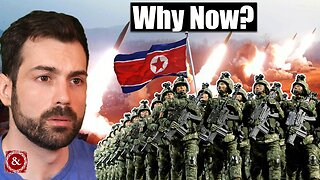 17:03
17:03
OMNIsynsei Geopolitics
3 months agoWhy North Korea is Quickly Preparing for War
59 -
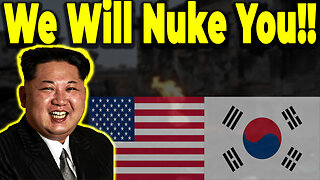 7:10
7:10
GeopoliticalTrends
4 months agoNorth Korea is Not Bluffing!
1.43K4 -
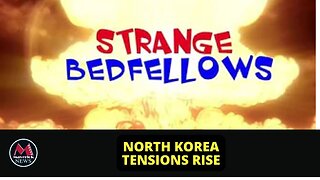 25:43
25:43
MAVERICK NEWS CHANNEL 2
9 months agoStrange Bedfellows: North Korea Tensions Escalate
258 -
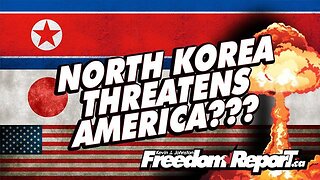 0:57
0:57
Kevin J. Johnston and FreedomReport.ca - Canada's Number One Podcaster
1 year agoNORTH KOREA THREATENS THE UNITED STATES - PEOPLE LOSE IT - HERE IS WHY YOU SHOULDN'T BAT AN EYELASH
5012 -
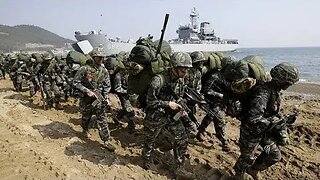 2:20
2:20
Thoughts TV
1 year agoUnited Nations should demand end to S.Korea-US military drills - North Korea
151 -
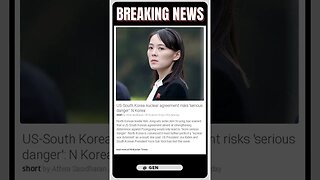 0:49
0:49
Gen Z News
1 year agoKim Yo-jong Warns: North Korea Must Develop Nuclear Weapons As Deterrent | #shorts #news
32 -
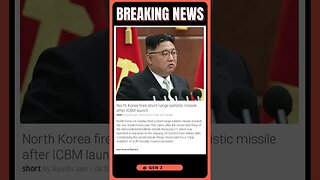 0:37
0:37
Gen Z News
1 year agoNorth Korea Launches Ballistic Missile: US at Risk of Direct Attack | #shorts #news
131 -
![The North Korean [DPRK] NUCLEAR MISSILE program escalates with CCP DF17 missiles now in play!](https://hugh.cdn.rumble.cloud/s/s8/1/P/s/x/n/Psxnl.0kob-small-The-North-Korean-DPRK-NUCLE.jpg) 59:41
59:41
The Unspoken Truth
10 months agoThe North Korean [DPRK] NUCLEAR MISSILE program escalates with CCP DF17 missiles now in play!
212 -
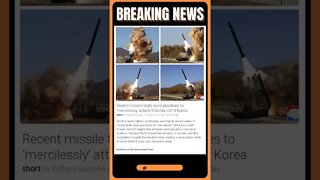 0:27
0:27
Gen Z News
1 year agoNorth Korea's Recent Missile Tests: Practicing to 'Mercilessly' Attack S. Korea and the U.S.
1